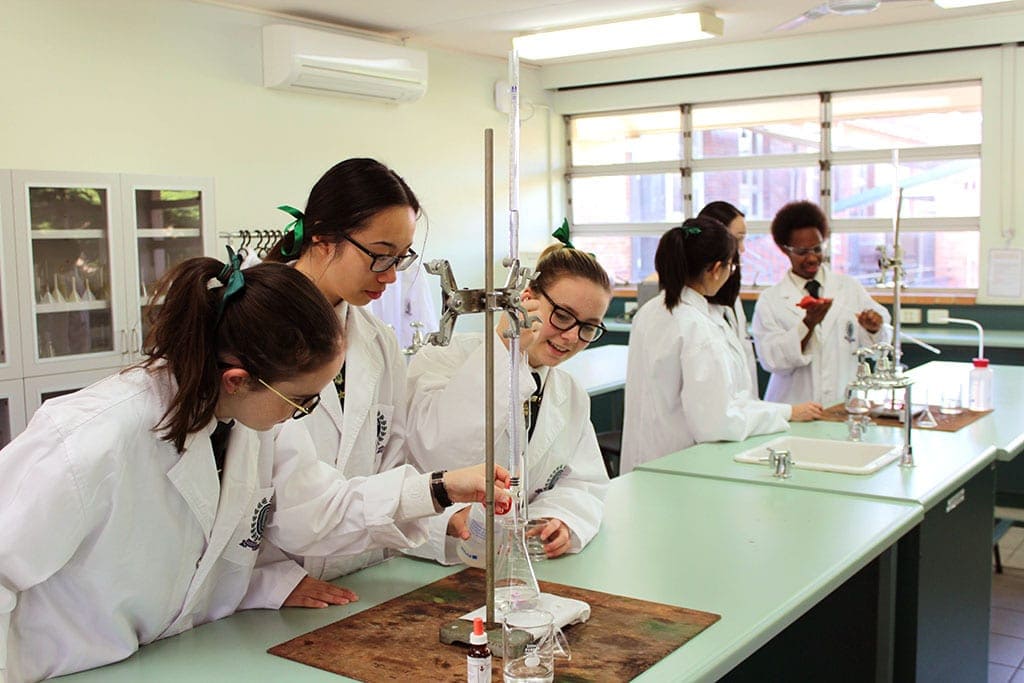The fields of Science, Technology, Engineering and Maths, otherwise known as STEM, continue to capture headlines in the media due to the importance these subjects hold for the future of our young people.
As early as ten years ago jobs such as “Social Media Manager” and “Mobile App Developer” simply did not exist, and this trend of new jobs is showing no signs of changing any time soon. Whilst these sound like great career options, there has been a considerable amount of concern about the lack of girls showing enough interest in these fields. There is also concern that girls are not taking their study further and ultimately, choosing the path of a STEM career. The challenge is clear for our schools.
How can teachers and parents help with STEM?
So why are young people today, and particularly girls, choosing not to take STEM further? And as a teacher or parent, how can we contribute towards changing this?
One of the biggest obstacles STEM subjects face is the belief that these subjects are “difficult”, “challenging”, or “boring”. As teachers of STEM subjects, we believe the key to fostering more interest is emphasising to our students that these subjects are about fun and creativity, and particularly, creativity in conjunction with problem solving, to benefit people and society. We must move away from the direct and indirect messages we tell our young people that these subjects are “hard” and “geeky”.
Resilience & role modelling is key
One of the most detrimental conversations we can have with our children is that “we found it difficult and boring too!” This reinforces their belief that it is acceptable to give up. Instead, the message should highlight that working hard to understand new concepts and overcome challenges is a part of life, and that perhaps they are simply not able to do it “yet”.
Teaching our young people to be resilient learners, and not giving up at the first sign of difficulty, should be the priority message, and is key to changing this mindset. For girls, this message can make all the difference.
A key motivator can be successful female professionals in areas of STEM. Access to these motivating, and often inspiring, role models broadens knowledge and ignites interest. Parents can often also be these inspirational adults in their children’s lives.

Choosing STEM at school
One of the most wonderful qualities of Clayfield College is to ensure that our girls and young boys can study the subjects they wish, with little or no STEM subjects conflicting with each other on the timetable. Our students are continually provided with a multitude of opportunities, both within and outside the classroom, to engage in STEM based activities and experiences.
STEM learning is a continuous and vital component across all Mathematics, Science and Technology classes. Inquiry based learning techniques, supported by current research- based pedagogies, are implemented to engage students and further the development of problem-solving skills. The importance and contribution of these learning areas in the development of modern day society is also referenced regularly.
Additionally students have the opportunity to engage in co- curricular STEM activities such as the STEM2PLATE Club, Double- Helix Science Club, Titration Club, Maths Club, Chess Club and Build to Fly Drone Club. Frequent opportunities are provided to interact with past students undertaking study in STEM related courses at university, visit universities, participate in STEM workshops, and engage in external competitions. By engaging with STEM concepts outside of the classroom, the aim is to highlight the importance of these subjects and their significant contribution to the advancement of society.
The new Australian Digital Technologies Curriculum has made the teaching of digital technologies (including programming concepts and computational thinking) a “core” subject alongside Mathematics, English and Science at Primary School. Young children are learning how to programme with BeeBots, Lego Wedo, Sphero, Little Bits and Ozobots (robotics and coding). Introducing young people to STEM through creative play in Primary School is the key to fostering curiosity and interest. Showing children that learning how to programme, and studying Maths and Science can be “fun”, will set them up well for the further study of STEM in Secondary School.
All of these afore mentioned activities, provide our young people with different ways and means to interact with STEM on a continual and ongoing basis – in and out of the classroom. This is incredibly important, as many young people lead very busy lives filled with sport, music and other interests that can dominate their time after school and on the weekend.
Promoting STEM at home
We must all take on the responsibility of building both confidence and interest in STEM. At home, parents can encourage and promote natural curiosity about the world. This stimulates engaging discussions and questions providing an opportunity to show your daughter/s that they do not have to have immediate answers to everything. If they explore and make mistakes, they can make discoveries for themselves. It is important to allow our girls to get messy around the house or in the garden, allowing experimenting and experiences that are not always successful the first time they are tried.
Practice predicting, measuring, observing and analysing. Encourage talk about Mathematics and Science, promote it, and engage in documentaries and films. Talk about what they have learnt in STEM related classes, share their enthusiasm, celebrate their successes, encourage any failures, arouse their curiosity and get excited! But most of all, let them see these subjects are fun!
Written by K Gibbs, C Lamb, L Mohan – Clayfield College.
This article featured in Issue 30 of our printed magazine, published October 2018.


